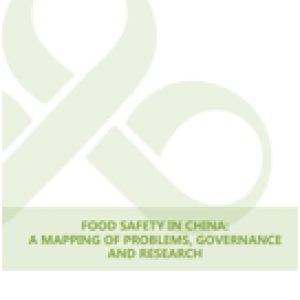This new report from the from China-based FORHEAD Working Group on Food Safety/SSRC discuss food safety issues in China. The report examines what is known from the natural, medical and social sciences about food safety in China and about policy and public responses. It aims to provide the basis for more effective use of existing knowledge and to inform a more integrated and problem-oriented research agenda.
Food safety encompasses a wide range of problems and this report illustrates the complexity of food safety in China through four examples: heavy metal pollution, pesticides, veterinary drugs and food additives. These relate to different stages of the food supply chain, involve different actors, and present different challengesfor governance.
The report stresses that hunger has more or less been eliminated and Chinese people have access to a wider range of food products than before, but concerns about food security and malnutrition remain. Furthermore, new food safety problems are emerging that reflect strains on China’s food system stemming from processes of urbanization and industrialization, including the intensification of agricultural production, the rapid expansion of certain product sectors, longer supply chains, and the consumption of more processed food.
The report argues that the development trajectory in China over the past 35 years has had some very special characteristics, and certain policies and administrative arrangements (including land tenure, rural industrialization, central-local fiscal and administrative relations, etc.) have shaped both the nature of food safety risks and the capacity to respond to them.
The report concludes that no simple association can be made between socioeconomic status or regional economic development and levels of risk. Wealthy consumers have more purchasing options, but they may also be exposed to a greater number of risks through longer and more complex supply chains, while some poor areas have relatively safe local food systems. In addition the public demand for improvements in the management of food safety risks is increasing faster than the capacity to provide them. It is fueled partly by the media focus on food safety problems as well as by growing awareness of the impacts of environmental degradation on health more generally. Public anxiety is also heightened by the lack of reliable public information or risk communication, and by evidence of official corruption associated with some food safety problems
The report is available both in Chinese here and in English here.
The FCRN recently released a major report, depicting the changes in China's food system over the past 35 years. You can read it here.








Post a new comment »